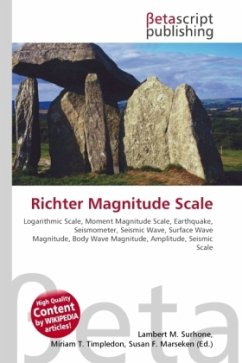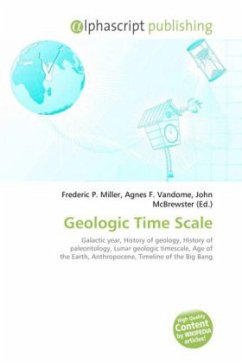
Moment Magnitude Scale
Versandkostenfrei!
Versandfertig in 6-10 Tagen
23,99 €
inkl. MwSt.

PAYBACK Punkte
12 °P sammeln!
The moment magnitude scale (abbreviated as MMS; denoted as Mw, where w indicates work accomplished) is used by seismologists to measure the size of earthquakes in terms of the energy released.The magnitude is based on the moment of the earthquake, which is equal to the rigidity of the Earth multiplied by the average amount of slip on the fault and the size of the area that slipped.The scale was developed in the 1970s to succeed the 1930s-era Richter magnitude scale, ML. Even though the formulae are different, the new scale retains the familiar continuum of magnitude values defined by the older...
The moment magnitude scale (abbreviated as MMS; denoted as Mw, where w indicates work accomplished) is used by seismologists to measure the size of earthquakes in terms of the energy released.The magnitude is based on the moment of the earthquake, which is equal to the rigidity of the Earth multiplied by the average amount of slip on the fault and the size of the area that slipped.The scale was developed in the 1970s to succeed the 1930s-era Richter magnitude scale, ML. Even though the formulae are different, the new scale retains the familiar continuum of magnitude values defined by the older one. The MMS is now the scale used to estimate magnitudes for all modern large earthquakes by the United States Geological Survey.Like the Richter scale, the MMS is logarithmic; on the scale, an earthquake one number higher is approximately thirty-one times (the square root of 1,000) more powerful (for example, 7.0 is about thirty-one times the power of 6.0).












